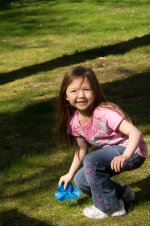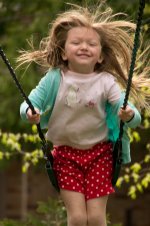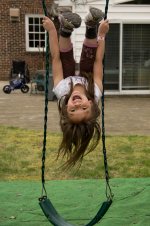Online Magazine
Recent Posts
- Safeguard your Cellphone Photos
- Black & White to Color – Instantly
- Wearing Many Hats
- Video Roundup
- Rescuing Your Blurry Pictures
- Showing Their Age
- What is Your Angle?
- Panorama Photos
- Humorous Photos
- Close Ups
- Fisheye Pictures
- Photo Antiquities
- Printing Big
- Appreciating Scale
- Celebrity Sightings
Tags
More Places to Go
- Free "How-To" Books “How To” books for popular cameras 0
- Vist Us on Facebook keep in touch with us on Facebook 2
Archives
- July 2023 (1)
- March 2023 (2)
- February 2023 (1)
- December 2022 (1)
- October 2022 (1)
- September 2022 (8)
- August 2022 (9)
- July 2022 (1)
- June 2022 (1)
- June 2021 (1)
- May 2021 (1)
- March 2021 (5)
- February 2021 (4)
- January 2021 (2)
- April 2019 (1)
- March 2019 (1)
- February 2019 (1)
- October 2018 (2)
- April 2018 (1)
- March 2018 (4)
- February 2018 (1)
- November 2017 (1)
- August 2017 (1)
- June 2017 (1)
- April 2017 (1)
- March 2017 (5)
- February 2017 (2)
- January 2017 (1)
- October 2016 (1)
- September 2016 (1)
- August 2016 (1)
- July 2016 (1)
- May 2016 (1)
- April 2016 (1)
- March 2016 (2)
- February 2016 (1)
- January 2016 (2)
- December 2015 (1)
- November 2015 (1)
- October 2015 (3)
- April 2015 (1)
- March 2015 (5)
- February 2015 (1)
- January 2015 (4)
- December 2014 (2)
- November 2014 (5)
- October 2014 (2)
- September 2014 (1)
- August 2014 (2)
- July 2014 (1)
- May 2014 (1)
- April 2014 (5)
- March 2014 (5)
- December 2013 (2)
- November 2013 (18)
- October 2013 (1)
- September 2013 (1)
- August 2013 (1)
- July 2013 (1)
- June 2013 (3)
- May 2013 (1)
- April 2013 (2)
- March 2013 (1)
- February 2013 (1)
- January 2013 (1)
- December 2012 (1)
- November 2012 (2)
- October 2012 (2)
- September 2012 (5)
- August 2012 (2)
- July 2012 (1)
- June 2012 (1)
- May 2012 (1)
- April 2012 (4)
- March 2012 (1)
- February 2012 (1)
- January 2012 (3)
- December 2011 (1)
- November 2011 (3)
- October 2011 (1)
- September 2011 (2)
- August 2011 (2)
- June 2011 (3)
- May 2011 (4)
- April 2011 (8)
- March 2011 (8)
- February 2011 (10)
- January 2011 (6)
- December 2010 (11)
- November 2010 (14)
- October 2010 (6)
- September 2010 (12)
- August 2010 (2)
- July 2010 (4)
- June 2010 (3)
- May 2010 (1)
- April 2010 (1)
- March 2010 (2)
- February 2010 (1)
- January 2010 (1)
- December 2009 (1)
- November 2009 (2)
- October 2009 (2)
- September 2009 (1)
- August 2009 (3)
- July 2009 (2)
- June 2009 (1)
- May 2009 (2)
- April 2009 (1)
- March 2009 (2)
- February 2009 (1)
- January 2009 (3)
Zeroing in on your subject
22nd June 2011
Crystal Clear – doesn’t need apply to everything in your photo
One of the most convenient features of today’s digital cameras is their ability to automatically focus on your subject. The result is that we have fewer out of focus pictures. In fact, sometimes we end of with picture that have too much in focus.
Except for the least expensive models, most digital cameras have the one or more “selective” focusing options.
For example, when shooting portraits, one technique that’s often used is to focus carefully on the face while at the same time throwing the background out of focus. This technique allows the photographer to “zero in” on the main subject. The key to “defocusing” the background is to set the lens to use a large aperture (smaller f/stop number).
Quick tip for selective focus:
- Set your mode dial to “A” -(aperture preferred automatic exposure)
- Rotate the control dial until the smallest f/stop (largest aperture)
- Focus on your main subject
- Shoot
Written by Arnie Lee
Filling the frame
07th June 2011
Sometimes it pays to move in close
For portraits, conventional composition has you surrounding your main subject with a “border” – space around the face
For a more intimate look at your subject, throw away the rulebook!
By simply minimizing or eliminating the border, you’ll key in on the all important eyes and face of your subject. The next time you’re shooting faces, try filling the frame.
Written by Arnie Lee
Beyond the Faces
06th May 2011
Adding Action to Portraits
As a grandfather with a camera, I’m very often snapping away when the grandchildren are nearby. So it shouldn’t be surprising that I have hundreds (maybe thousands) of photos of these kids in my collection.
Yesterday, three of them were out playing in our backyard. Here’s a few snapshots that I took. I’m a big fan of trying to incorporate action into these portraits. You be the judge of whether the action helps to make the picture.
While each of the left-hand photos are OK, I’ve learned that adding a little action to the mix can turn my snapshots into real “keepers”.
Do you agree?
Written by Arnie Lee
« Older Posts — Newer Posts »












